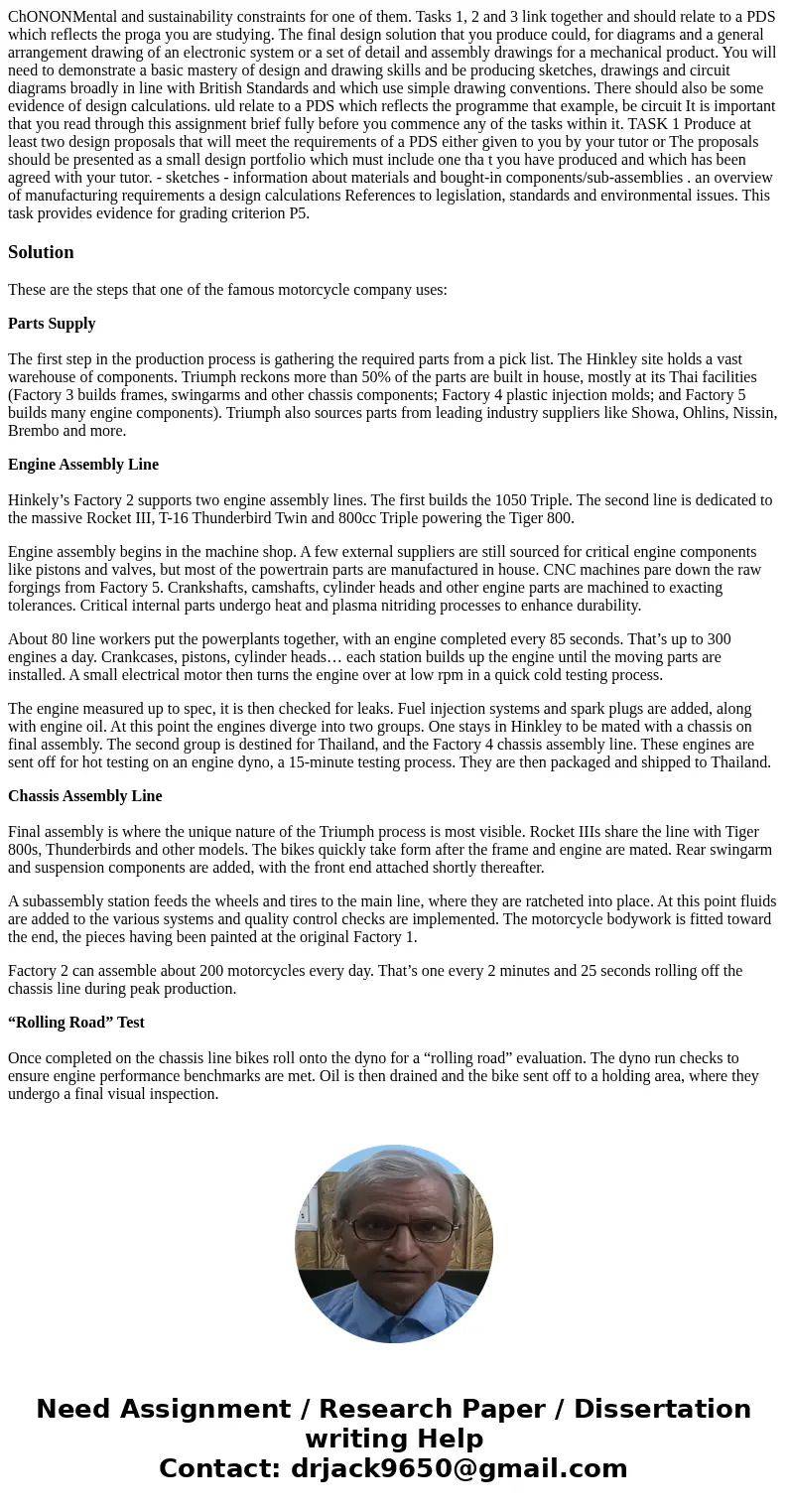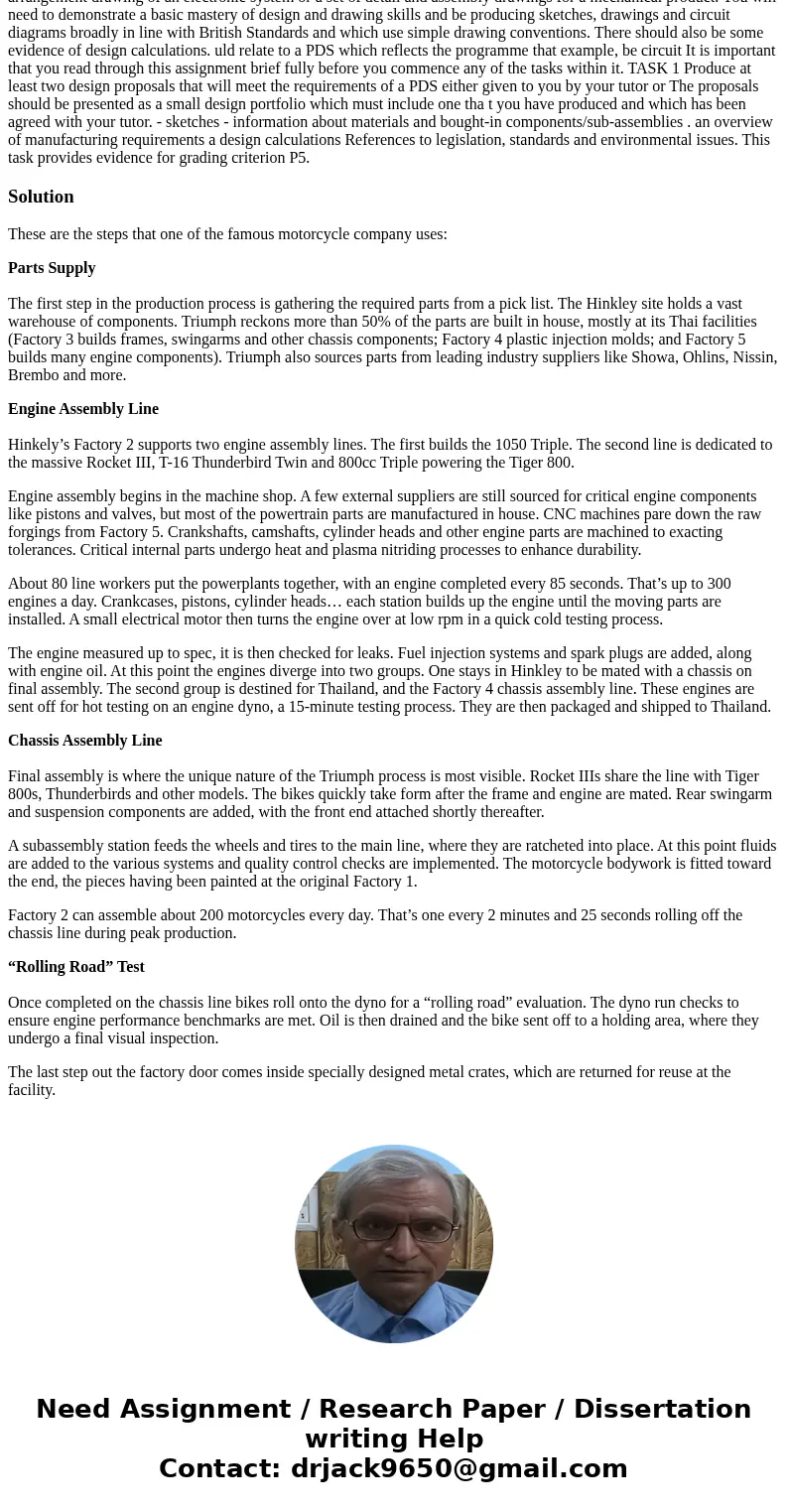ChONONMental and sustainability constraints for one of them
Solution
These are the steps that one of the famous motorcycle company uses:
Parts Supply
The first step in the production process is gathering the required parts from a pick list. The Hinkley site holds a vast warehouse of components. Triumph reckons more than 50% of the parts are built in house, mostly at its Thai facilities (Factory 3 builds frames, swingarms and other chassis components; Factory 4 plastic injection molds; and Factory 5 builds many engine components). Triumph also sources parts from leading industry suppliers like Showa, Ohlins, Nissin, Brembo and more.
Engine Assembly Line
Hinkely’s Factory 2 supports two engine assembly lines. The first builds the 1050 Triple. The second line is dedicated to the massive Rocket III, T-16 Thunderbird Twin and 800cc Triple powering the Tiger 800.
Engine assembly begins in the machine shop. A few external suppliers are still sourced for critical engine components like pistons and valves, but most of the powertrain parts are manufactured in house. CNC machines pare down the raw forgings from Factory 5. Crankshafts, camshafts, cylinder heads and other engine parts are machined to exacting tolerances. Critical internal parts undergo heat and plasma nitriding processes to enhance durability.
About 80 line workers put the powerplants together, with an engine completed every 85 seconds. That’s up to 300 engines a day. Crankcases, pistons, cylinder heads… each station builds up the engine until the moving parts are installed. A small electrical motor then turns the engine over at low rpm in a quick cold testing process.
The engine measured up to spec, it is then checked for leaks. Fuel injection systems and spark plugs are added, along with engine oil. At this point the engines diverge into two groups. One stays in Hinkley to be mated with a chassis on final assembly. The second group is destined for Thailand, and the Factory 4 chassis assembly line. These engines are sent off for hot testing on an engine dyno, a 15-minute testing process. They are then packaged and shipped to Thailand.
Chassis Assembly Line
Final assembly is where the unique nature of the Triumph process is most visible. Rocket IIIs share the line with Tiger 800s, Thunderbirds and other models. The bikes quickly take form after the frame and engine are mated. Rear swingarm and suspension components are added, with the front end attached shortly thereafter.
A subassembly station feeds the wheels and tires to the main line, where they are ratcheted into place. At this point fluids are added to the various systems and quality control checks are implemented. The motorcycle bodywork is fitted toward the end, the pieces having been painted at the original Factory 1.
Factory 2 can assemble about 200 motorcycles every day. That’s one every 2 minutes and 25 seconds rolling off the chassis line during peak production.
“Rolling Road” Test
Once completed on the chassis line bikes roll onto the dyno for a “rolling road” evaluation. The dyno run checks to ensure engine performance benchmarks are met. Oil is then drained and the bike sent off to a holding area, where they undergo a final visual inspection.
The last step out the factory door comes inside specially designed metal crates, which are returned for reuse at the facility.


 Homework Sourse
Homework Sourse